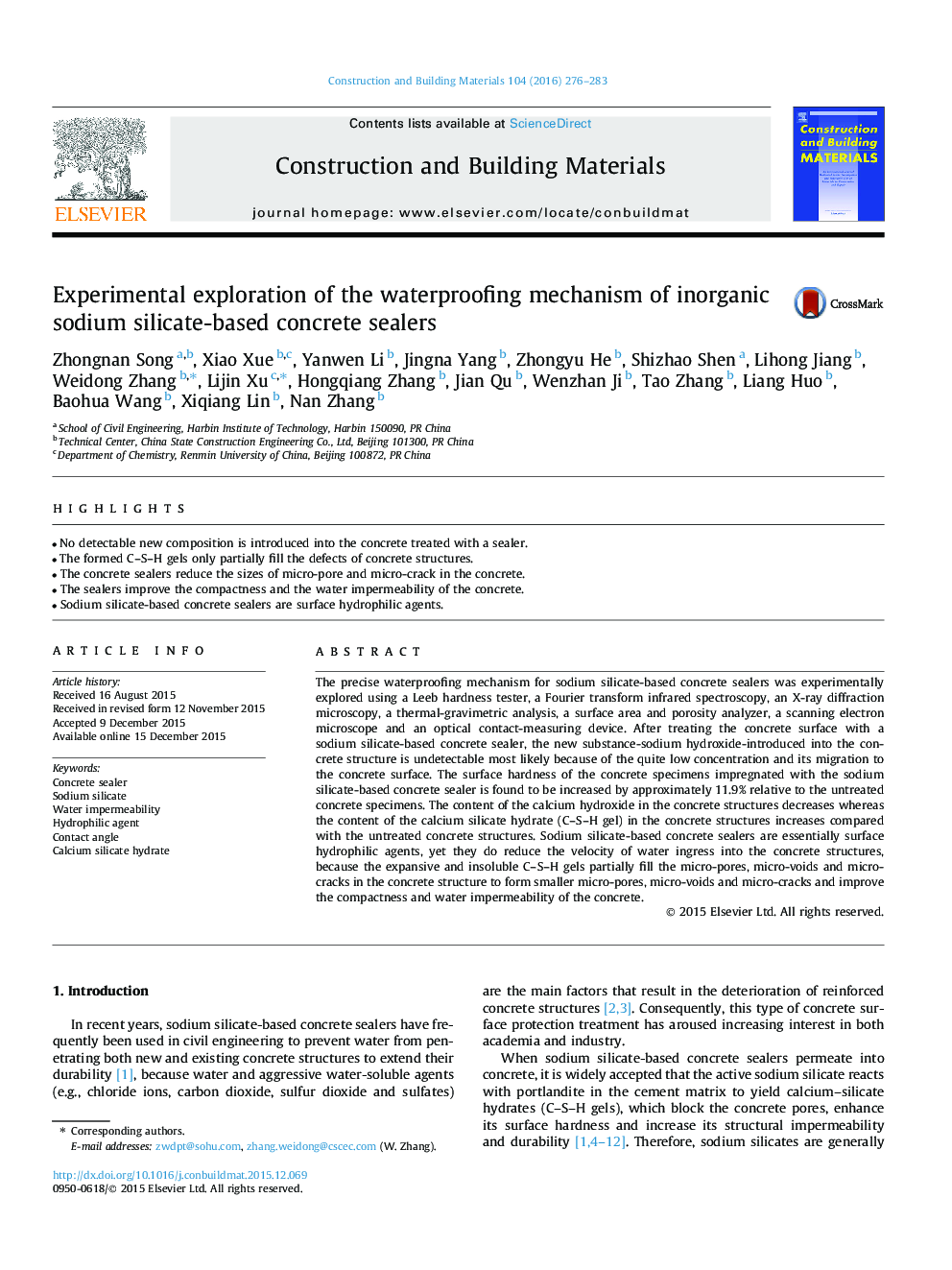| کد مقاله | کد نشریه | سال انتشار | مقاله انگلیسی | نسخه تمام متن |
|---|---|---|---|---|
| 256321 | 503548 | 2016 | 8 صفحه PDF | دانلود رایگان |
• No detectable new composition is introduced into the concrete treated with a sealer.
• The formed C–S–H gels only partially fill the defects of concrete structures.
• The concrete sealers reduce the sizes of micro-pore and micro-crack in the concrete.
• The sealers improve the compactness and the water impermeability of the concrete.
• Sodium silicate-based concrete sealers are surface hydrophilic agents.
The precise waterproofing mechanism for sodium silicate-based concrete sealers was experimentally explored using a Leeb hardness tester, a Fourier transform infrared spectroscopy, an X-ray diffraction microscopy, a thermal-gravimetric analysis, a surface area and porosity analyzer, a scanning electron microscope and an optical contact-measuring device. After treating the concrete surface with a sodium silicate-based concrete sealer, the new substance-sodium hydroxide-introduced into the concrete structure is undetectable most likely because of the quite low concentration and its migration to the concrete surface. The surface hardness of the concrete specimens impregnated with the sodium silicate-based concrete sealer is found to be increased by approximately 11.9% relative to the untreated concrete specimens. The content of the calcium hydroxide in the concrete structures decreases whereas the content of the calcium silicate hydrate (C–S–H gel) in the concrete structures increases compared with the untreated concrete structures. Sodium silicate-based concrete sealers are essentially surface hydrophilic agents, yet they do reduce the velocity of water ingress into the concrete structures, because the expansive and insoluble C–S–H gels partially fill the micro-pores, micro-voids and micro-cracks in the concrete structure to form smaller micro-pores, micro-voids and micro-cracks and improve the compactness and water impermeability of the concrete.
Journal: Construction and Building Materials - Volume 104, 1 February 2016, Pages 276–283
